Browse Exhibits (5 total)
Griva's Private Relations - Group 20
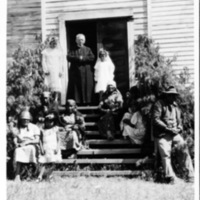
The photographs and text in this digital exhibit come from Gonzaga University's Foley Library in relation with Jesuits West Province of the Society of Jesus. All documents and pictures originated from the Edward Griva, S.J. Collection. These items all hail from Northeastern Washington.
Father Edward Griva worked as a missionary in the Inland Northwest, teaching, converting and guiding Native Americans within the Plateau region. Born in Italy, in 1864, he eventually travelled to Washington for his Jesuit education and training. Until he died in 1948, Fr. Griva acted as a religious leader for the Kalispel reservation and the Confederate Tribe of the Colville reservation. One example of Griva’s extensive work in the area reveals itself in his diary where he reports having heard 2886 confessions in 1921.
This exhibit showcases Griva’s interactions with the tribes mentioned above. It will show questions used in the Sacrament of Confession, pictures of Fr. Griva interacting with Native Americans, and various pictures of successfully converted Native Americans, both young and old.
Spreading Religion in the Vast Inland Empire
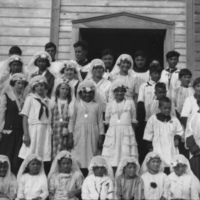
During the early 1900s, Jesuit missionaries began to move to the Inland Empire in order to convert Plateau Indians to Catholicism. One issue the Jesuits did not take into account is how spread the natives were across the plateaus. Having to travel miles upon miles to reach each church with a limited amount of missionaries made evangelizing the natives much more difficult than the Jesuits had originally thought.
As you read this exhibit, you will learn about some of the struggles the Jesuits faced in their efforts to convert the Native Americans
Jesuit Sacraments of the Columbia Plateau
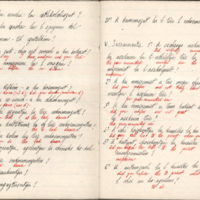
This exhibit details archival records regarding three Jesuit Sacraments on the Columbia Plateau: Confession, Communion and Confirmation. There were a variety of differences in culture between the Jesuit missionaries and the Native Americans of the Plateau. However, the ceremonial nature of the sacraments struck a chord with a variety of Native Americans and they often led to an increased interest and connection with Catholicism.
Feast of Corpus Christi
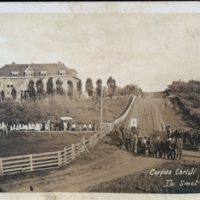
In this exibit are photographs documenting different aspects of the Feast of Corpus Christi, celebrated every year throughout the Catholic Church. These photographs come from the Archives of the Jesuits West Province and depict Corpus Christi Feasts at various Jesuit missions on the Colombian Plateau in the early 20th century. Once thought of by the Jesuits as a pristine Native paradise, the Plateau was one of the last regions in the United States to come into direct contact with White culture.
The photographs in this exhibit are a conglomoration of various Corpus Christi Feasts at Jesuit missions across the Plateau in the mid-1920s.
Much of the textual information provided in this exhibit comes from the first hand accounts of Edward Griva, a Jesuit missionary to the Plateau in the early 20th century. While on the Plateau, Griva diligently documented his expeirences in a journal, providing a window into the religious interactions between Natives and Whites. In a seperate account, Griva gives a detailed record of his involvement in, and observations of, multiple Corpus Christi Feasts in May and June of 1926.
In conjunction, the photographs and primary source documents demonstrate the ways in which Natives interacted with, and participated in, an important yearly Jesuit ritual, as seen through a White lens.
The Feast of Corpus Christi was a highly ceremonial affair, including a great procession with multiple benedictions along the way. This exhibit showcases the various stages of the celebration: leaving the church, processing, stopping for benedicitons, and returning to the church. The photographs are ogranized into subpages based on the stages of the celebration they depict.
Catholic Ceremonies on the Plateau
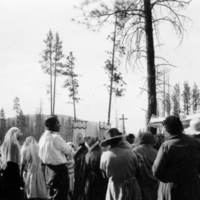
Tradition and ceremonies are central to the Catholic religion. On the Plateau, the Jesuit missionaries shared their religion with the Native Americans through a number of different sacraments and celebrations, notably the sacraments of First Communion and Confirmation and the Corpus Christi celebration.
There are seven holy sacraments in the Catholic tradition, and they are various ceremonies where Catholics are able to connect with God's grace. The sacraments include baptism, receiving the Eucharist, being confirmed into the church, reconciling one's sins, annointing of the sick, marriage, and holy orders, or becoming a priest. Our exhibit highlights the holy sacraments of First Communion, or recieving the Eucharist, and Confirmation, as well as the Corpus Christi celebration, which is not a sacrament.
